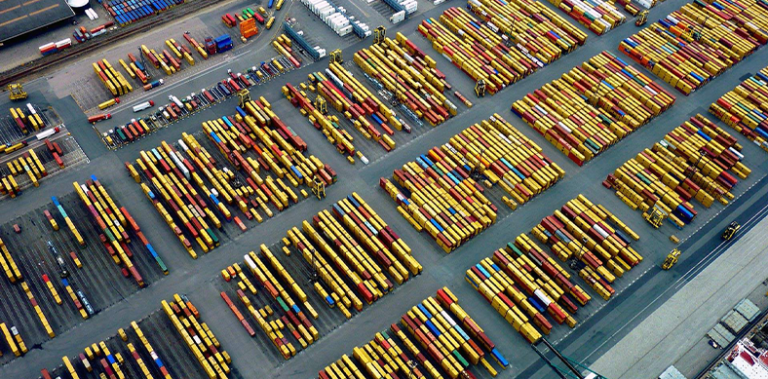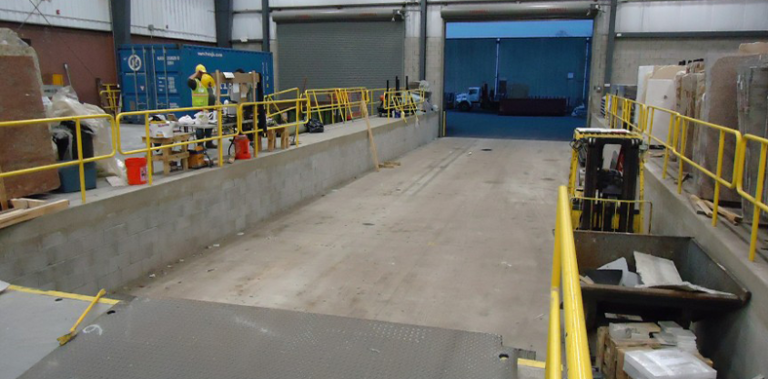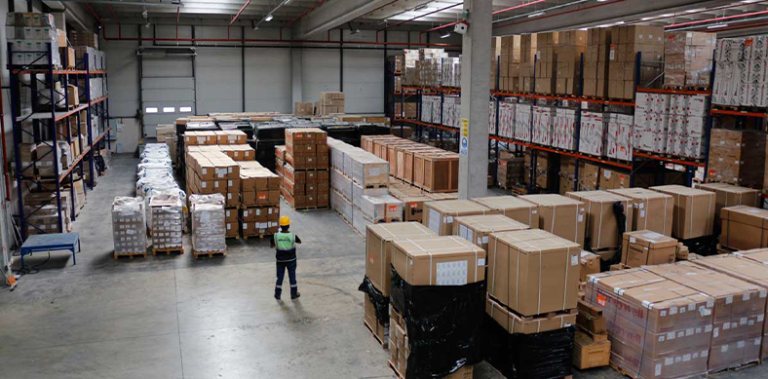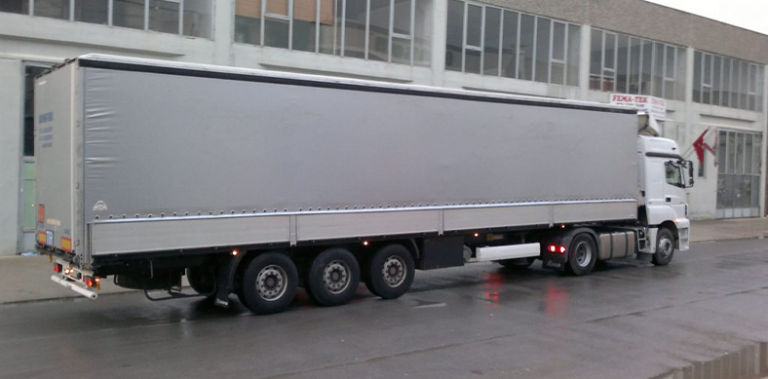
A freight forwarder, or forwarding agent, is a person or company that organizes shipments for individuals or corporations to get goods from the manufacturer or producer to a market, customer or final point of distribution. Forwarders contract with a carrier or often multiple carriers to move the goods from one country to another.

An intermodal container, often called a shipping container or a freight container, is a large standardized shipping container, designed and built for intermodal freight transport, meaning these containers can be used across different modes of transport – from ship to rail to truck – without unloading and reloading their cargo. Intermodal containers are primarily used to store and transport materials and products efficiently and securely in the global containerized intermodal freight transport system, but smaller numbers are in regional use as well.

Transit trade is the sale of goods of foreign origin or domestic origin and sold abroad directly to another country, without being subject to the provisions of the import and export regime, purchased by a real and legal person transit trader, on the basis of the favorable difference between the purchase and sale prices. Except for the exceptional cases regulated in the relevant laws, the customs duties related to the goods subject to transit trade are secured.

If the goods are lost during the movement, the authorities in the country of transit will call on the owner to pay any import VAT, customs duty and other charges. In order to ensure that any fees are paid, the transit must be covered by an approved guarantee. If the owner cannot pay, the guarantee will be triggered.

Warehousing is the process of storing physical inventory for sale or distribution. Warehouses are used by all different types of businesses that need to temporarily store products in bulk before either shipping them to other locations or individually to end consumers.

Covered storage is essentially an overhead shield for your vehicle. At a lower cost than indoor, it offers protection from the sun, rain and snow.

Lashing is a word used in the logistics industry to fix cargoes, starting from the English word binding. Lashing process, in general terms, means that the cargoes are fixed to each other correctly in order to ensure the transportation of the cargo in a healthy way. The fixing process is carried out in different situations such as fixing the loads on the vehicle to the vehicle, fixing the loads transported by the container in the container, fixing the loads transported by equipment such as flat rack, flat platform to the containers, fixing the cargo carried on the project cargo ships to the ship’s hold or deck.
Lashing should be carried out in accordance with the international CTU (Cargo Transport Units) rules. CTU (Cargo Transport Units) standards, IMO (International Maritime Organization), ILO (International Labor Organization) and UNECE (United Nations Economic Commission for Europe) have been determined by the joint work, and are the methods determined to provide the most accurate and healthy cargo safety lashing conditions. While CTU generally draws general frameworks for sea and road transports, similarly, AAR (Association of American Railroads) rules have been established about similar scientific lashing methods in rail transports.
Lashing (fastening and fastening) operations to help your project cargoes to be transported safely in vehicles, mafia, inside containers, flat rack containers, inside the ship’s warehouse and on top of the warehouse; It is carried out in the most efficient and effective way by our expert teams, using certified materials in international standards. Likewise, lashing solution & unlashing service is performed by our expert teams. We can carry out your lashing operations 24/7 in all ports, free zones, factories and warehouses of Turkey, in accordance with international standards, under conditions where occupational safety conditions are appropriate. We look forward to your valuable comments and requests.

A curtainsider – sometimes called a Tautliner or Euroliner – has curtain sides that can be opened to provide easy access for loading and unloading. Once the trailer is loaded, the curtains are closed and secured in place, creating a visual barrier and a protective shield around the contents.